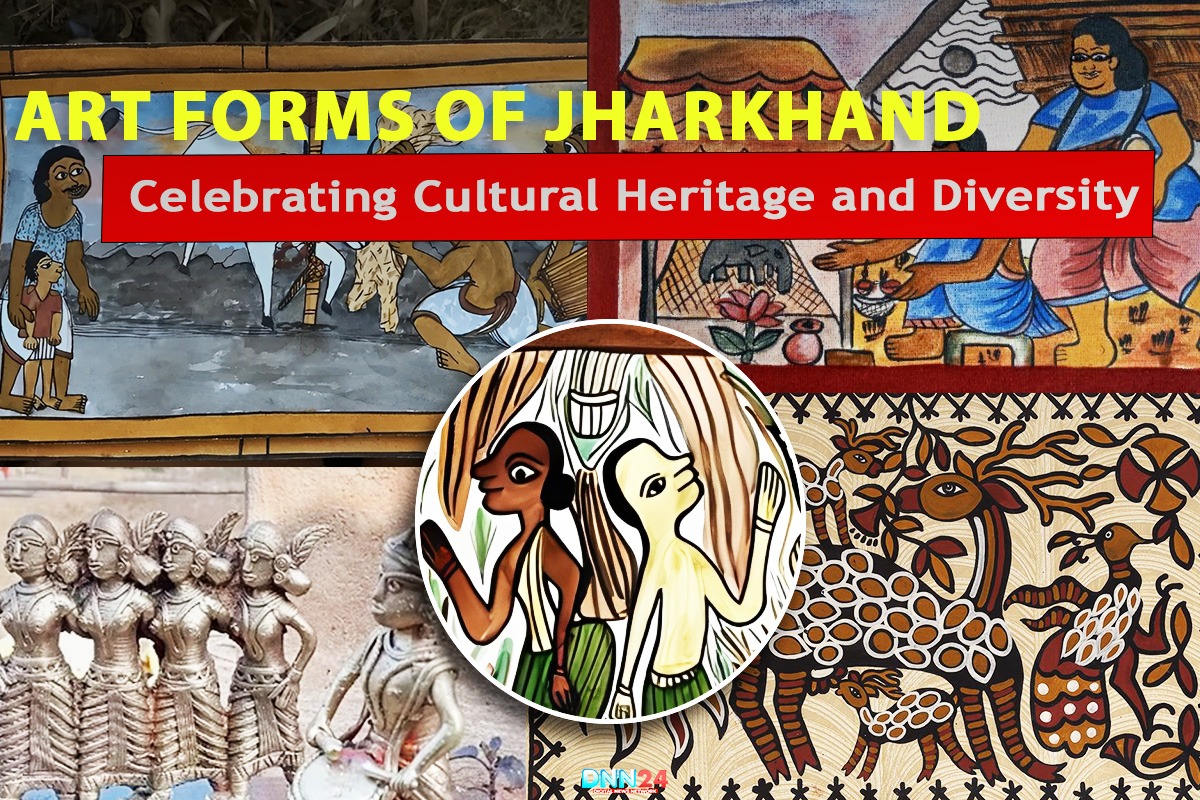India’s eastern region holds Jharkhand as one of its states with an abundant traditional heritage as well as arts expression diversity. After achieving independence in 2000 this state supports a large tribal population and showcases its living folk arts. The artistic traditions of the state represent both its cultural background while simultaneously upholding its historical customs. Sohrai along with Jadopatia and both Payatkar as well as Kohvar paintings comprise Jharkhand’s collection of well-known folk arts. The artistic landscape of the state expands through unique art forms which bring diverse elements to its culture.
Tribal culture in Jharkhand remains the foundation of the state’s artistic traditions because these art forms have been transmitted from one generation to the next. This location between hills and forests serves as an artistic influence on the motifs and themes found in these works. The common artistic practice of using natural elements and colors unites most of the art forms because artists maintain an intensified relationship with their surroundings. The global promotion of these art forms has increased their preservation status as well as their recognition worldwide.
Sohrai Painting: A Celebration of Harvest
Sohrai painting stands as the greatest artistic tradition in Jharkhand but finds its peak expression in the Hazaribagh district. Sohrai painting has close links to the harvest festival that occurs during the autumn following Diwali. The term “Sohrai” is derived from the Mundari word “Soroi,” meaning “to lash with a stick.” The art form exists exclusively through women who teach the techniques to their female descendants. Sohrai paintings stand out through their colorful schemes of red alongside black and white because they represent fertility and death and food respectively.
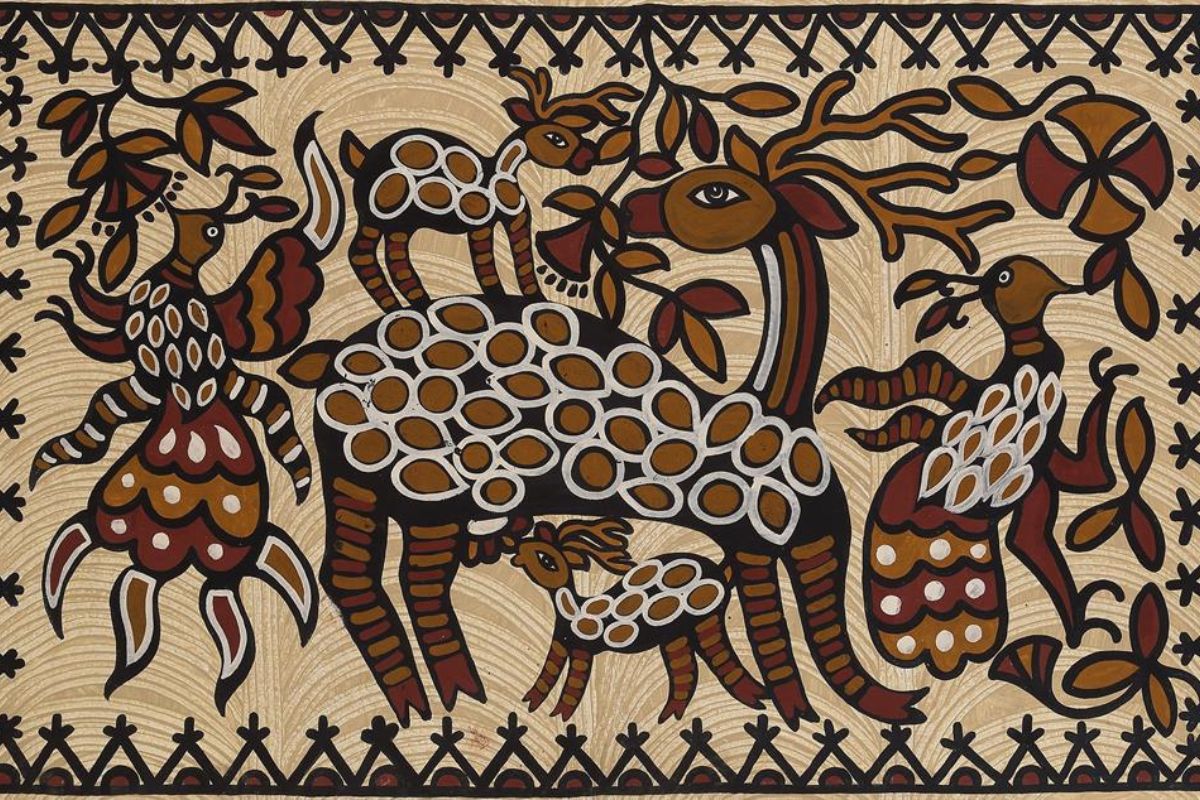
The portrayed animals in these artworks include hens with chicks and Indian buffaloes and tigers to demonstrate human life’s relationship with nature. The murals serve both ornamental and spiritual functions since people consider them capable of bringing both fortune and good luck. The artistic authenticity of this form gets strengthened through the utilization of earth materials and plant-derived pigments. The highly distinctive Sohrai paintings earned recognition through a Geographical Indication (GI) tag which identifies their cultural value.
Jadopatia: The Narrative Scrolls
The traditional art practice Jadopatia exists primarily through male participants among performers located in the Dumka district of Jharkhand. The term “Jadopatia” is derived from the words “jado,” meaning magic, and “patia,” meaning scroll painter. The art form lets artists tell stories by drawing scrolls containing pictures about Santhal mythology as well as Hindu epics and tribal life stories. Natural elements of stones, leaves, and tree bark are employed alongside Jadopatia artists to produce paints for their storytelling scrolls which undergo use in performances.

Among the Jadopatias are skilled story tellers who continue their journey between villages to perform recitations about creation myths and festival narratives as well as legendary tales. Through their performances accompanied by songs and dances Jadopatia becomes a complete art form which blends both visual artwork and performing craftsmanship. The artistic tradition has strong origins in West Bengal but now belongs fully to the cultural fabric of Jharkhand. Jadopatia maintains its active development through the mixture of contemporary materials along with classic methods.
Paitkar Painting: A Visual Narrative
The Paitkar community in the Singhbhum district practices the important art form known as Paitkar painting. Artist expressions through Paitkar painting consist of narrative depictions on reused paper dies using vermillion pigments along with natural hues. Hindu epics such as Ramayana and Mahabharata together with community legends and myths are common visualization subjects in these paintings. The traditional toolset of Patkar artists includes goat hair as well as needles which produce distinctive feelings of texture when artists apply their colorful compositions.

The visual beauty of Paitkar paintings carries two essential functions since they function both as narrations and cultural protection methods. These artists visit different residences to present their stories and perform artistic paintings at ceremonies including births along with funeral events. Through this artistic tradition the communities of Jharkhand showcase their social religious practices which honor their belief in festivals and myths in everyday life. The artistic importance of Paitkar painting exists yet its marginal understanding persists because it needs increased attention and better advocacy.
Kohvar Painting: Celebrating Marriage
The artistic tradition of Kohvar painting exists for Jharkhand marriage customs specifically in the Hazaribagh district region. The term “Kohvar” translates to “bridal room,” as these paintings are typically created in the room where the newlywed couple spends their first night. The practice of Kohbar painting exists only through female artists who work with single-color design schemes incorporating prominent elements of elephants and lotuses and peacocks.

White clay gets applied on top of a black earth foundation during Kohvar painting processes where artists make their designs through combing or manual pattern creation. Traditional symbols in these arts convey wishes for fertility and prosper along with a life of happiness for the newlyweds. Kohvar paintings received GI tag recognition together with Sohrai paintings because of their distinct cultural value. Artists produce Kohvar paintings on both paper and cloth materials to reach more members of the general public.
Dhokra Art: A Metal Craft Tradition
Jharkhand residents practice Dhokra art as their traditional metal craft because of its basic design quality that draws artistic enjoyment. The process behind this metal sculpting art form applies the lost wax technique that involves bronze and copper for creating metal sculptures. Crafting clay models leads to applying wax threads followed by pouring molten metal into the mold during the manufacturing process. The metal cools down after which the artisans extract the clay material to reveal detailed metallic products.
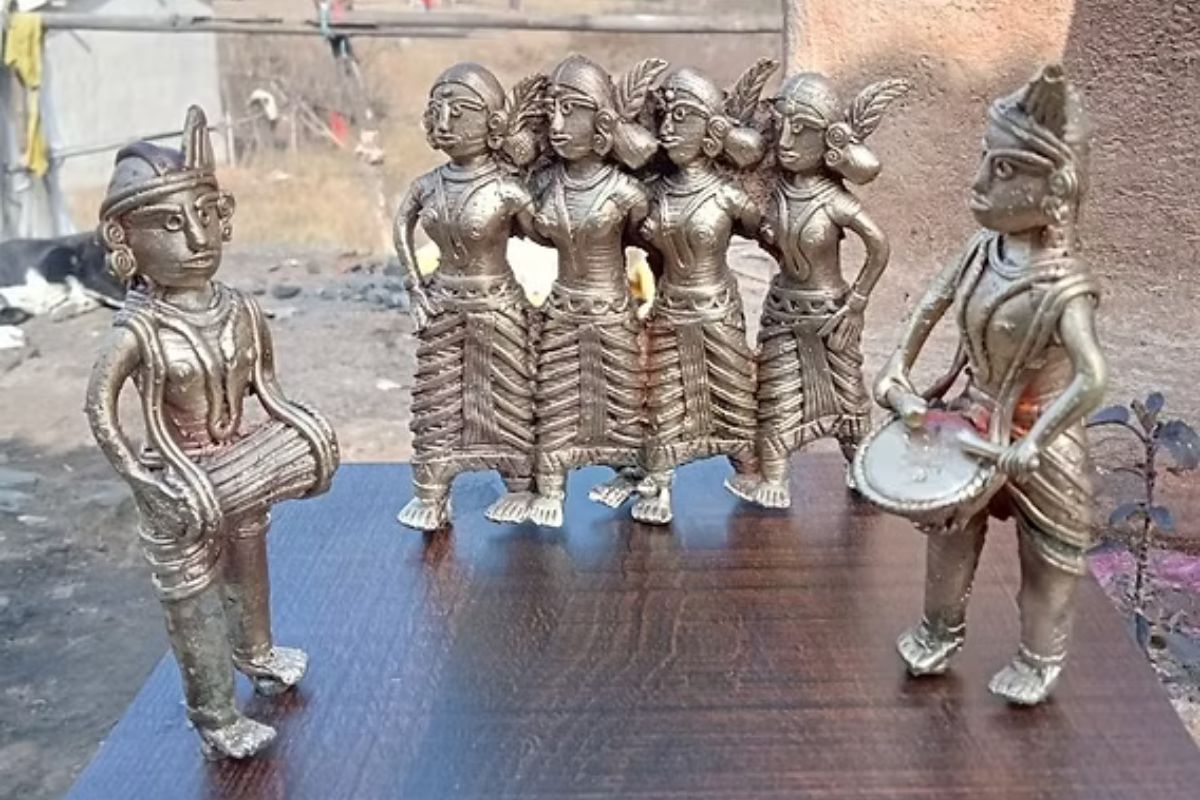
The ongoing practice of Dhokra art dates from prehistoric times because its production methods began in ancient antiquity. The people of Jharkhand’s Malhar community maintain status as expert practitioners of Dhokra metalwork. Jharcraft operates as a state-run initiative that trains artisans and provides marketing support resulting in the promotion of Dhokra artisans. Modern society acknowledges Dhokra metal art through both domestic appreciation combined with international recognition because of its distinctive craftsmanship and cultural value.
Ganju Art: Conservation Through Creativity
Ganju art exhibits mural painting as a unique artistic practice which the Ganju people practice in Jharkhand. Ganju art develops its distinctive style through large walls painted with animals and floral drawings. The Ganju population applies their paintings directly to their houses and they frequently select endangered wild species to portray. Wildlife conservation becomes a priority for the community combined with their profound reverence for nature. Ganju art brings both style and ecological concern with a purpose to increase people’s knowledge about wildlife protection.

The colorful depictions and natural-based motifs of Ganju art connect the community to their surrounding nature. Ganju art endures many difficulties because of insufficient documentation and lack of recognition among its cultural significance. The work to advance this art form continues through exhibitions combined with workshops that preserve this art tradition for revival purposes.
Birhor and Bhuiya Art: Simplicity and Authenticity
Birhor and Bhuiya arts maintain their original essence through a commitment to clear clean artistry. The graphic elements of mandalas along with crescents and stars appear throughout the paintings of these communities. Users of finger painting techniques create the art which makes it distinct from other forms. The communities use minimal but impactful motifs that show their natural perception combined with their religious traditions.

Birhor and Bhuiya artists combine aesthetic design creation with spiritual values in their artistic works. The motifs in artwork represent favorable circumstances and wealth together with spiritual protection from the forces of evil. The traditional importance of this art form faces decline because modern art has gained dominance and there is no financial backing for its development.
Kurmi Art: A Less Documented Tradition
The tribal art form of Kurmi maintains a significant place in Jharkhand’s cultural traditions although researchers have not focused on it as much. The artwork displays motifs that resemble other tribal artistic traditions which represent the unified cultural history of this part of the world. The Kurmi art tradition maintains its roots within traditional customs along with established tribal beliefs that guide the community. Documentary records about Kurmi art are insufficient which makes it less well-known compared to other artistic practices in that part of the region.

The documentation process of Kurmi art together with dedicated promotion initiatives will assist in securing its recognition as well as preservation. Our knowledge and appreciation of Kurmi art unlocks deeper insights about first the cultural customs of the Kurmi community as well as their contribution to Jharkhand’s diverse cultural inheritance.
Turi Art: Basketry and Painting
Turi people master basket-making yet independently practice an art of painting which makes them famous. The artistic style of Turi art showcases motifs of flowers and jungles which the natives depict on their home walls by using natural-toned colors. The community’s natural bonding with nature along with their expertise in crafting attractive artwork from natural materials defines this artistic expression.
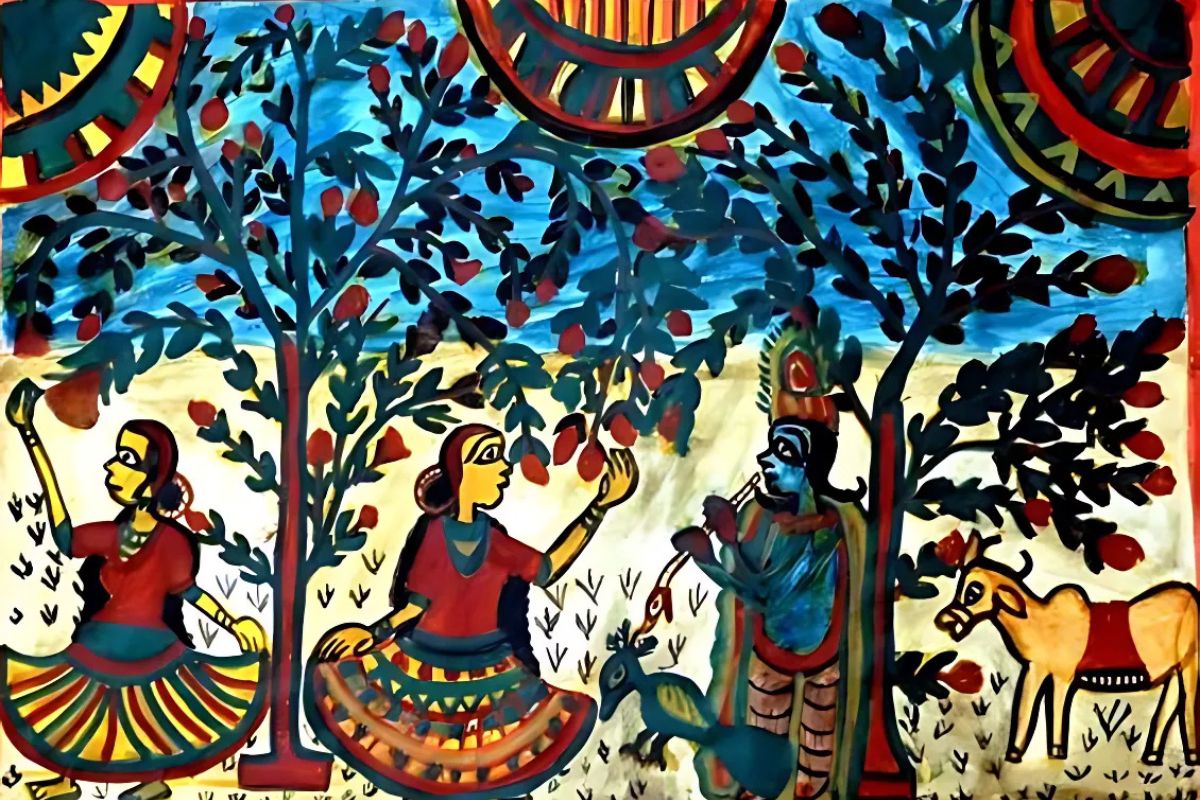
The artistic creations of the Turi community preserve dual aspects of traditional heritage because they have both aesthetic beauty and cultural depth. Throughout these paintings the depicted motifs convey both fertility and prosperity because the community shows deep reverence for nature. The visual art tradition of Turi suffers two main obstacles from present-day artistic developments while simultaneously dealing with a shortage of support in its community.
Munda Art: Vibrant Depictions of Nature
Through its energetic artistic style Munda artwork illustrates both community existence and natural environments. The traditional Munda tribe cultural practices include Turi art as a central artistic element through which they show their environmental bond. Decorative elements of Munda art include depictions of animals along with trees and flowers that artists draw with vivid colors.

Through Munda art the Munda community finds its socio-religious practices vital while this artistic form represents their cultural expression. Munda art continues through successive generations which preserves both its cultural heritage and cultural value. Modernization and insufficient recognition present obstacles that threaten the future of Munda art together with the rest of tribal art traditions.
Ghatwal Art: Nature on Forest Dwellings
The inhabitants of Ghatwal utilize glyptic animals to decorate their forest dwellings through their art practice thus highlighting their profound natural bond. As an art tradition Ghatwal stands apart through its natural material base together with its animal subject matter. Ghatwal art functions as a dual artistic practice that combines design development with community expressions regarding nature and animal respects.
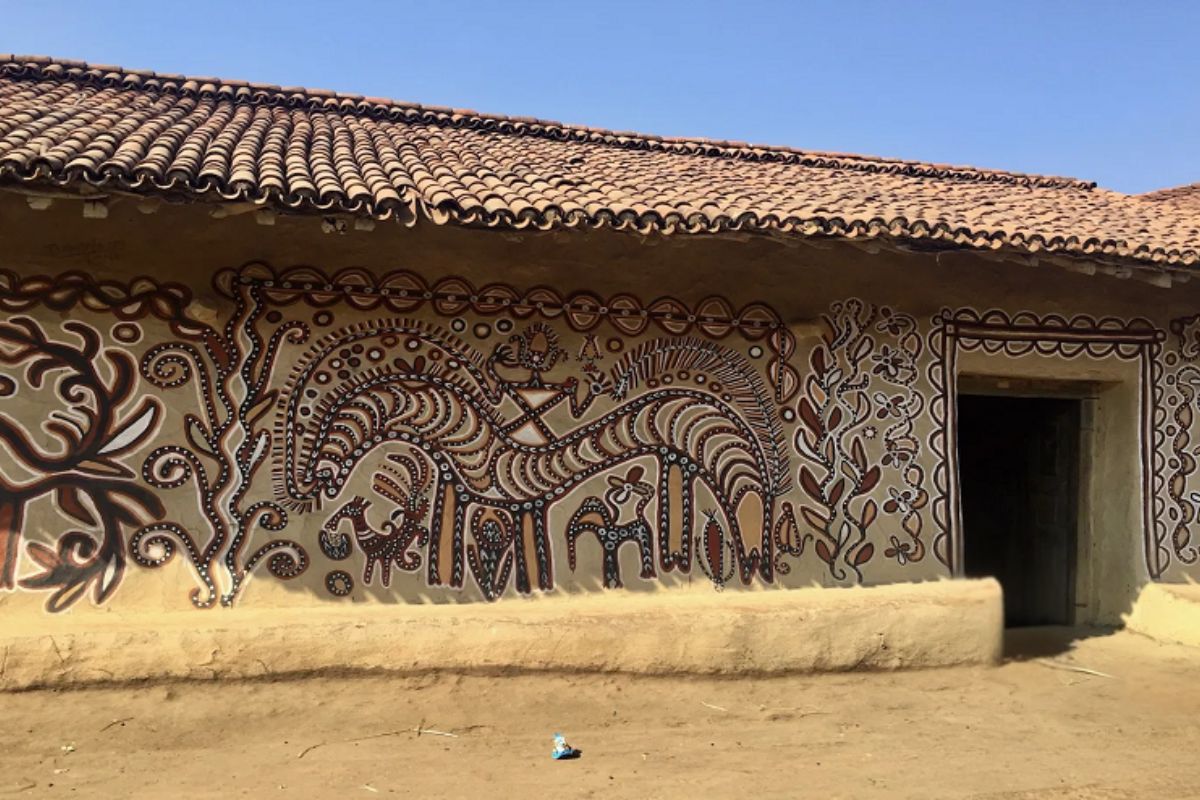
Ghatwal art struggles for recognition because it lacks proper documentation of its cultural importance. Thearts lost heritage is preserved through exhibitions and workshops that may help encourage its continued growth and survival. Studying Ghatwal art enables us to comprehend the cultural customs of the community and their bond with environmental elements.
Preserving Tribal Art Forms
The cultural heritage of Jharkhand depends on protecting tribal art traditions including Ganju, Birhor, Bhuiya, Kurmi, Turi, Munda and Ghatwal. Here we find art expressions which serve both as creative expressions and sacrilegious manifestations of cultural heritage and spiritual beliefs. The government together with cultural organizations promotes tribal art forms by organizing exhibitions and running workshops and recording their evolution.
Effective market development and recognition of traditional art styles will create conditions to protect these artistic traditions. The promotion of local arts should be started on digital platforms while festivals of culture should be established to create opportunities for local artists to showcase their work. In conclusion, the tribal art forms of Jharkhand are a testament to the state’s rich cultural diversity and its people’s deep connection with nature and tradition.
Also Read: The Diverse and Unique Art Forms of Bengal
You can connect with DNN24 on Facebook, Twitter, and Instagram and subscribe to our YouTube channel.

